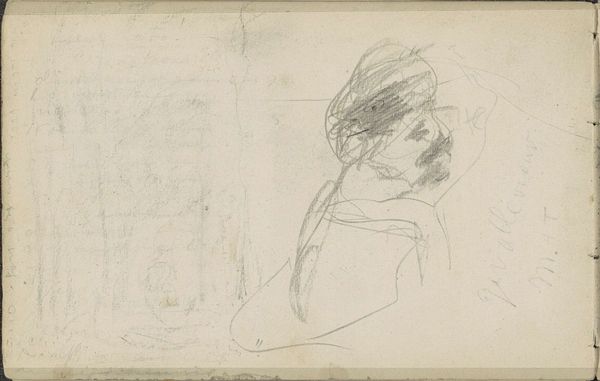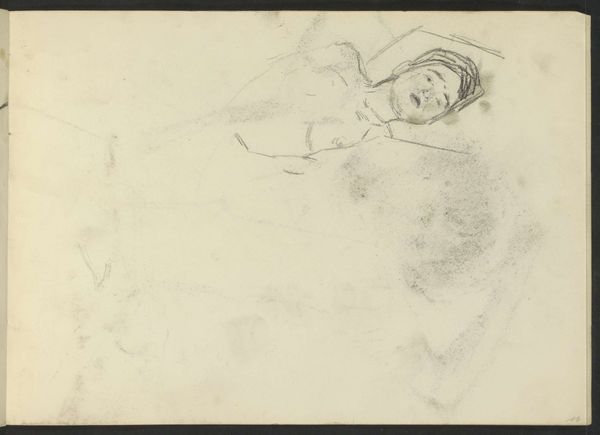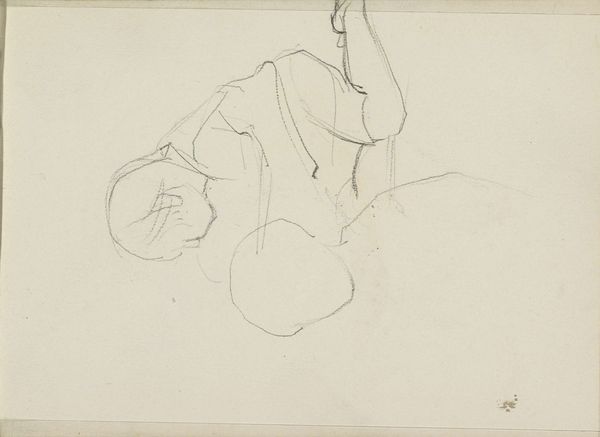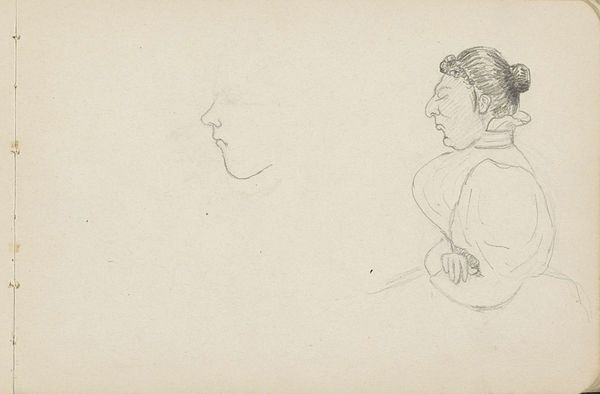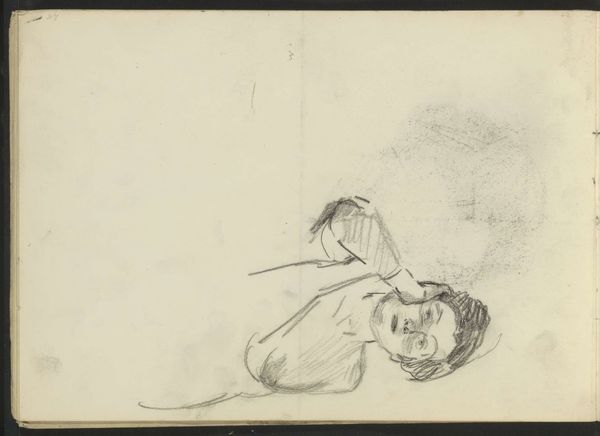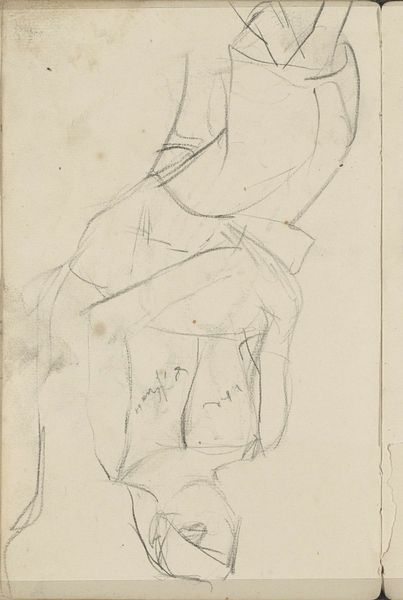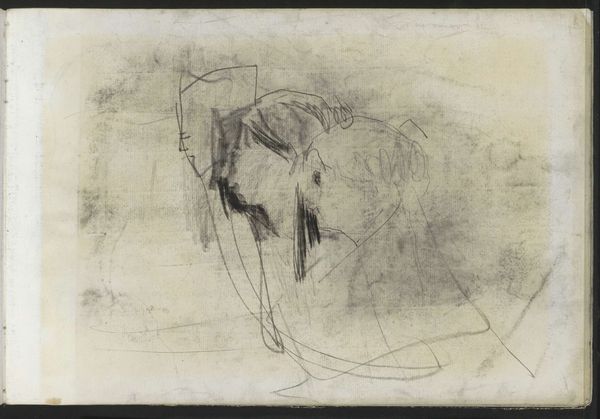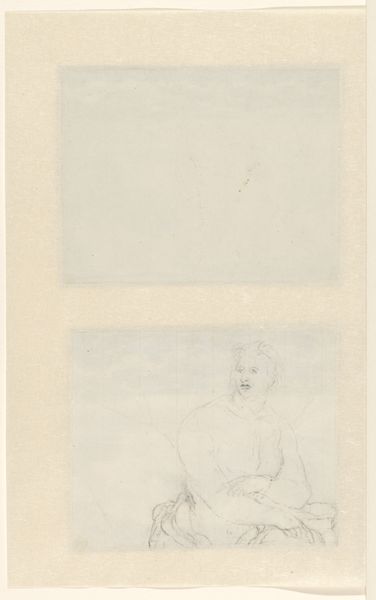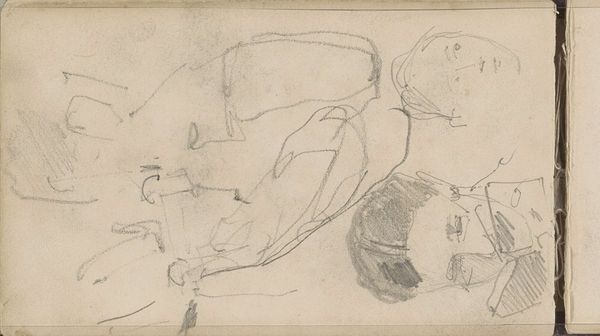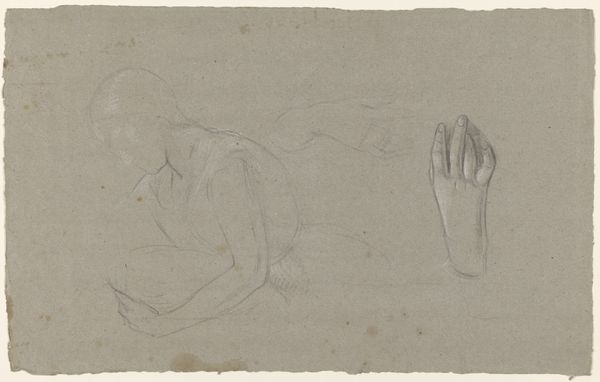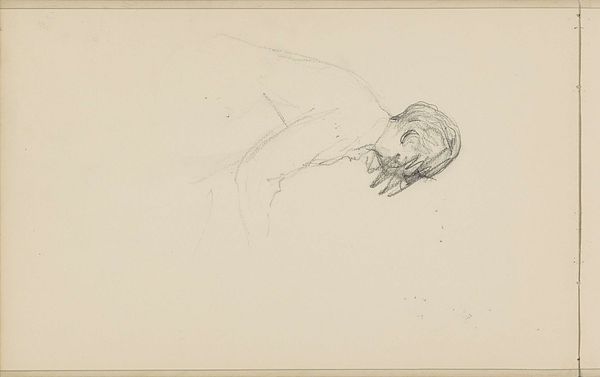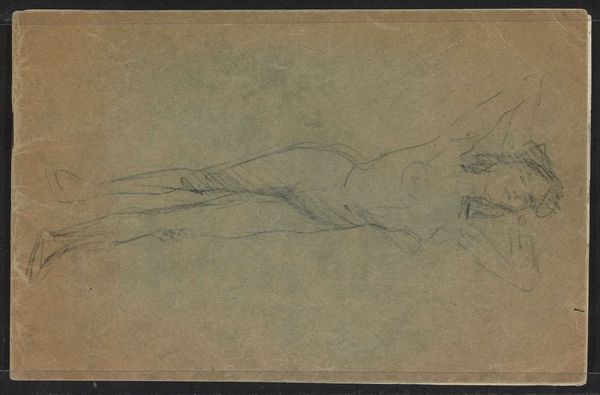
drawing, pencil
#
portrait
#
drawing
#
pencil sketch
#
figuration
#
pencil
Copyright: Rijks Museum: Open Domain
Julie de Graag sketched this drawing with pencil, titled 'Women's Head and Torso with a Jacket'. The most striking motif is the gesture of the hands clasped together. Throughout art history, clasped hands can signify grief, contemplation, or supplication, tracing back to ancient Roman funerary art. The drawing's emotional depth comes from the universal human experience of reflection and introspection. This image calls to mind the work of artists such as Käthe Kollwitz and Edvard Munch, who explored similar themes of human psychology and emotional vulnerability. The motif of clasped hands, however, appears and reappears in countless forms across time. Consider its echo in the work of Renaissance masters, like Dürer's 'Praying Hands', where clasped hands transform into a symbol of devotion. The persistence of this motif across cultures and epochs speaks to its deep resonance in the human psyche, triggering subconscious associations. Through these connections, de Graag invites viewers to contemplate not only the image but also the broader themes of human existence.
Comments
No comments
Be the first to comment and join the conversation on the ultimate creative platform.
